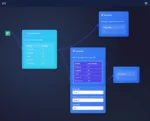In the era of real-time analytics and lightning-fast data pipelines, ensuring resilience and reliability is not just advantageous—it’s imperative. For every organization racing to turn continuous data streams into business insights, the risk of data loss or service interruption looms large. Enter checkpointing and recovery: the strategic duo that addresses this very risk. As a data-focused consulting firm, we’ve seen firsthand how architecting these mechanisms into your dataflows can spell the difference between silent data corruption and seamless, self-healing operations. In this article, we dive deep into checkpointing and recovery for continuous dataflows, spotlighting the practical realities, nuanced design decisions, and innovation opportunities facing today’s technology leaders.
Understanding Checkpointing: The Backbone of Stream Reliability
Checkpointing is much more than a technical afterthought; it’s the backbone of any resilient streaming architecture. In continuous dataflows—where data is always in motion—checkpointing refers to the periodic saving of the current system state. This enables a data streaming system, such as Apache Flink or Spark Structured Streaming, to resume processing from a known, consistent state in the event of failure. If you’re interested in the foundational skillsets that drive these architectures, our breakdown of the differences between data engineers and data analysts illustrates why engineering expertise is fundamental here.
The practical value of checkpointing is evident in situations ranging from transient node failures to planned system upgrades. Without robust checkpoints, any breakdown could mean replaying entire datasets, risking both data duplication and insight delays. Architecting for distributed checkpoints—stored reliably, often in object storage like AWS S3—is part of our AWS consulting services. We align checkpoints with your latency and recovery objectives, tuning frequency and durability to match your throughput and fault tolerance needs. At its core, checkpointing isn’t just a science—it’s a philosophy for operational resilience.
Challenges Unique to Continuous Dataflows
Designing checkpointing and recovery for continuous dataflows presents distinct technical and organizational challenges. Unlike batch jobs, where boundaries are clear and recovery is relatively straightforward, data streams are unending, often distributed, and highly concurrent. A persistent challenge is managing backpressure in high-throughput environments, where checkpoint pauses must be orchestrated so as not to throttle ingestion or processing.
Furthermore, checkpointing introduces questions of coordination and consistency. All stream operators must be in sync to ensure a globally consistent state—a non-trivial requirement in a distributed environment with frequent updates and out-of-order events. As described in The Core Paradox: Why More CPUs Don’t Always Mean Faster Jobs, scaling parallelism magnifies coordination complexity. Finally, the human factor—governance, monitoring, and alerting—must not be overlooked; automated workflows can erase entire swaths of data as quickly as they process it. Effective organizations bring a mix of process rigor, technical tooling, and specialized expertise to mitigate these risks.
Recovery in Action: From Checkpoints to Business Continuity
When failures inevitably occur, recovery becomes the crucible in which your checkpointing strategy is tested. A best-in-class recovery architecture instantly leverages the last successful checkpoint to restore streams, recompute minimal lost state, and resume pipeline operations without user or customer interruption. Whether you operate in a single-region setup or architect for multi-region high availability, restoring from checkpoints is your safety net for critical data applications and analytics workloads.
A nuanced aspect is managing workflow blueprints and stateful operators at restore time. The Template Method pattern for standardizing workflow blueprints reveals the advantage of codified, modular recovery procedures; these allow your recovery process to adapt to both data schema changes and evolving business logic. Additionally, recovery orchestration needs to account for not just functional state restoration, but also timeline consistency—ensuring data processing resumes at the precise point of interruption with no silent data loss or duplication. Orchestrating these intricacies is an area where specialized partners like Dev3lop thrive, offering both the technical and strategic guidance for high-stakes environments.
Innovation Opportunities: Beyond Basic Checkpoint-Restore
The future of checkpointing and recovery is brimming with possibilities as organizations push for even lower recovery times and more intelligent, autonomous remediation. Today, leading-edge deployments are exploring advanced optimizations such as thread-local storage for parallel data processing, which accelerates recovery by minimizing the overhead of global state reconciliation. Innovations also span smarter checkpoint placement—using analytics and pattern recognition to anticipate failure risk and checkpoint accordingly.
At the same time, analytics leaders are recognizing the strategic value of robust recovery beyond “disaster protection.” Effective data pipelines underpin not only business continuity, but also digital customer experience—as we outlined in enhancing customer experience through data analytics and engineering. Forward-thinking teams leverage checkpoint data and recovery insights for continuous monitoring, cost optimization, and even regulatory reporting. In essence, checkpointing and recovery are not just tools to survive outages—they are levers for organizational agility in a high-frequency, data-driven world.
Conclusion: Weaving Checkpointing and Recovery into Your Data DNA
Checkpointing and recovery aren’t just features of robust data pipelines—they’re non-negotiable pillars for any enterprise intent on thriving in the digital age. From the technical dimensions of recovery orchestration to the broader impact on data-driven business outcomes, investing in these capabilities pays out in both peace of mind and competitive advantage. For leaders looking to build or optimize their continuous dataflows, our AWS consulting practice is purpose-built to guide the journey with experience, rigor, and innovation. To deepen your technical acumen, be sure to explore our landscape of related topics—from streamlining operational infrastructure to tapping into local data analytics market trends and product updates that shape the ecosystem. The future belongs to those who make resilience and recovery a core practice—not just a checkbox.
Explore More
To go further:
– Advance your data visualization strategies with responsive SVG charts in streamed pipelines.
– Dive into the tradeoffs between CPUs and pipeline speed in The Core Paradox: Why More CPUs Don’t Always Mean Faster Jobs.
– Learn about optimizing customer analytics pipelines in the age of instant recovery with our best practices at Dev3lop’s AWS Consulting Services.
Thank you for your support, follow DEV3LOPCOM, LLC on LinkedIn and YouTube.

























